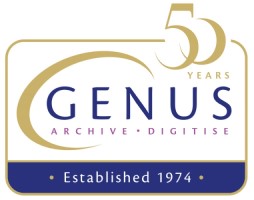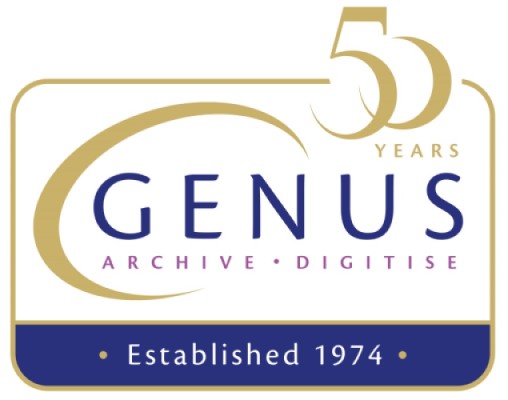IDMi Deputy Editor John Baker is on his soapbox (again) regarding ‘Lies, damned lies, and statistics reporters’ and is backed-up by Paul Negus, MD of Genus
I read with interest / alarm / disgust, (delete as applicable, but I reckon all of the above apply,) some online alerts I received from Google in July relating to a news item regarding my old best friend ‘microfilm’. The alerts pointed me to both the Daily Mail, (UK newspaper,) and to no less an esteemed institution than the Smithsonian, and related to lander data from the NASA Viking 1 mission, where the craft landed on Mars 40 years ago.
The Smithsonian title, ‘NASA IS Finally Digitizing the Viking Mission’s 4-Year-Old Data’ was as instantly offensive to me as it was grammatically incorrect, as it was an apparent sleight against NASA.
Re the grammar: A title should follow good practice in the use of Capitalisation (or Capitalization). The mix of capitals in this case is both incorrect and inconsistent, as is the hyphenation and the use of the apostrophe. A ‘ (apostrophe) mark indicates missing letters and/or plurals in the English language, so the brain reads Mission’s as Mission Is which does not mean ‘belonging to the mission’. ‘Belonging to the mission’ should either be Missions’, or require a restructuring the wording. [You mean as in …. digitizing the 40 year-old Viking Mission data? Ed.] Anyway …. Moving on – the article is packed with inaccurate statements, so let me dissect.
‘…. Researchers begin the arduous process of digitization’
Had the writer ever been involved in the digitisation of ANY quantity of microfilm, he/she/it would have been amazed to find how UN-arduous the process actually is. Capturing all (2,500+/-) frames from a 100 foot roll of microfilm is an absolute dawdle with todays sophisticated microfilm scanners. The process is very fast, semi- if not fully automatic, and with image edge-detection for scan accuracy, plus software allowing on-screen visual quality control, and the added benefit of image group density/contrast adjustment of scanned images, all before indexing and committing the scan to whatever electronic filing system it is destined for, it has never been easier to return archive images to an electronic system.
“‘ …. people quickly turned to digitizing data when the web came to be. So now we are going through the microfilm and scanning every frame into our computer database so that anyone can access it online.”‘
In my humble opinion the digitisation of data is nothing whatsoever to do with the web ‘coming into be’. We were scanning data long before Tim Berners-Lee and the miracle that is the interweb. We scanned more BECAUSE of the web, yes, but not when the web became accessible to all. As for scanning into a computer database, well although it is possible to hold images in a database as what are known as ‘blobs’ [Of data. Ed.] no system analyst in his right mind would condone that practice. Document management systems work best when the relational database does what it does best (which is relating data,) and storage systems do what they do best, (storing things,) so the optimum solution is to have a simple link from within the database, OUT to one or more image files.
‘…. NASA researchers poured over every inch of the probe’s high-resolution images ….’
I hope not. If they ‘poured’ anything over microfilm it would be very messy and possibly sticky. I think the writer meant to say’ …. they pored over every inch’. So much for spell-checkers.
‘”I remember getting to hold the microfilm in my hand for the first time and thinking, ‘We did this incredible experiment and this is it, this is all that’s left,'”‘
[The apostrophes and quotes are getting out of hand now. Ed.] Wait a minute — surely the person quoted, (David Williams of NASA Space Science Coordinated Archive meant to say, ‘I remember getting to hold the microfilm and thinking, “Thank goodness we had the foresight to commit this volatile computer data to a 500 year archivally permanent medium, otherwise we might have put all of this valuable intellectual property at extreme risk by keeping it on a computer system'”. Nuff said, but I would have thought a person described in the article as a ‘planetary curation scientist’, would have known better. [He must have a huge workplace if he is a curator of planets. Ed.]
Finally, from Danny Glavin, Associate Director for the Strategic Science in the Solar System Exploration Division [Snappy job title. Ed.] ….
“The point is for the community to have access to this data so that scientists 50 years from now can go back and look at it.”
I TOTALLY AGREE with Danny, but hey, let’s not stop at 50 years, because that only takes us to 2066, and some of you reading this wills till be around then! Let’s think more like – 2566. Yes, with microfilm certified to be archivally permanent for 500 years and possibly more, that takes us way beyond WWIII, the formation of the World Government with ‘Arthur C Trump the 23rd’ as President, FTL space travel, cryogenic resuscitation, and the ability to show ‘Die Hard 237 – The Search for More Money’ using 3D holographic cinematic technology projected onto your eyeballs – from your wrist-watch!
Alternatively, The Daily Mail title was much longer and surprisingly, (for a tabloid newspaper,) was more in-depth and had more pretty pictures to look at. None of which we can use here for reasons of copyright.
All-in-all, tongue-in-cheek? Yes, it is. [I like the copious use of hyphens to make-a-point. Ed.] But, if you are going to report on a technology — at least get the facts right first.
Bibliography:
Smithosian.com
www.smithsonianmag.com
Daily Mail
www.dailymail.co.uk
Genus — Proving that the truth really is out there:
www.genusit.com
John Baker, Deputy Editor, IDMi johnbaker@idmionline.com www.idmionline.com
Industry Comment: by Paul Negus, MD of Genus
I hope NASA are not throwing their microfilms away once they have scanned them. Those microfilms will last another 450 years minimum and why throw them away when they have already demonstrated their worth by outlasting the earlier digital technologies?
At Genus we have a government client, that for obvious reasons will go unnamed, that has had their microfilms scanned 3 times now in the last 18 years.
On the first occassion the digital file type quickly became obsolete. As they did little housekeeping on their digital collection it was too late by the time they found the problem and cheaper and more accurate to rescan the microfilms than attempt digital reconstruction. On the second occassion a scarily large number of folders were lost as they were shared over various databases. As a result the integrity of the remaining data was useless as a complete picture could no longer be achieved.
The third scan has been successful but who knows what the state of their digital collection will be in 10 years? However they have been smart enough to keep the microfilms again so they can relax.
Unlike NASA who are “converting these rolls of microfilm into digital data to preserve them for future generations of scientists and students.” Converting them to enjoy the many distribution advantages of digital data, yes – but for “preservation” reasons? They’ll be telling us there is a man on the moon next.
David Williams says that “At one time, microfilm was the archive thing of the future”. I think he means that it still is, because without it that information would not be here. Plus microfilm will be the archive thing of the next future – almost like Back to the Future – (http://www.genusit.com/back-to-the-future-digital-preservation/)
The article also reads as if microfilm is an old technology that is dead now. If that were so, then why is it that Fuji have developed [Pun intended? Ed.] and released a new range of microfilms – (http://www.genusit.com/a-new-microfilm-what-was-fujifilm-thinking/) and why have Genus created 5 new and very large microfilm clients this year alone – one of whom is an enormous government institution that insisted on microfilm as their records need to last forever?
And what are they putting onto the microfilm? – digital files of course because they are not trusted for proper long term preservation.
Digital to Microfilm writing is the latest and greatest new area of growth for microfilm.
Paul Negus, Managing Director, Genus




Comments are closed.